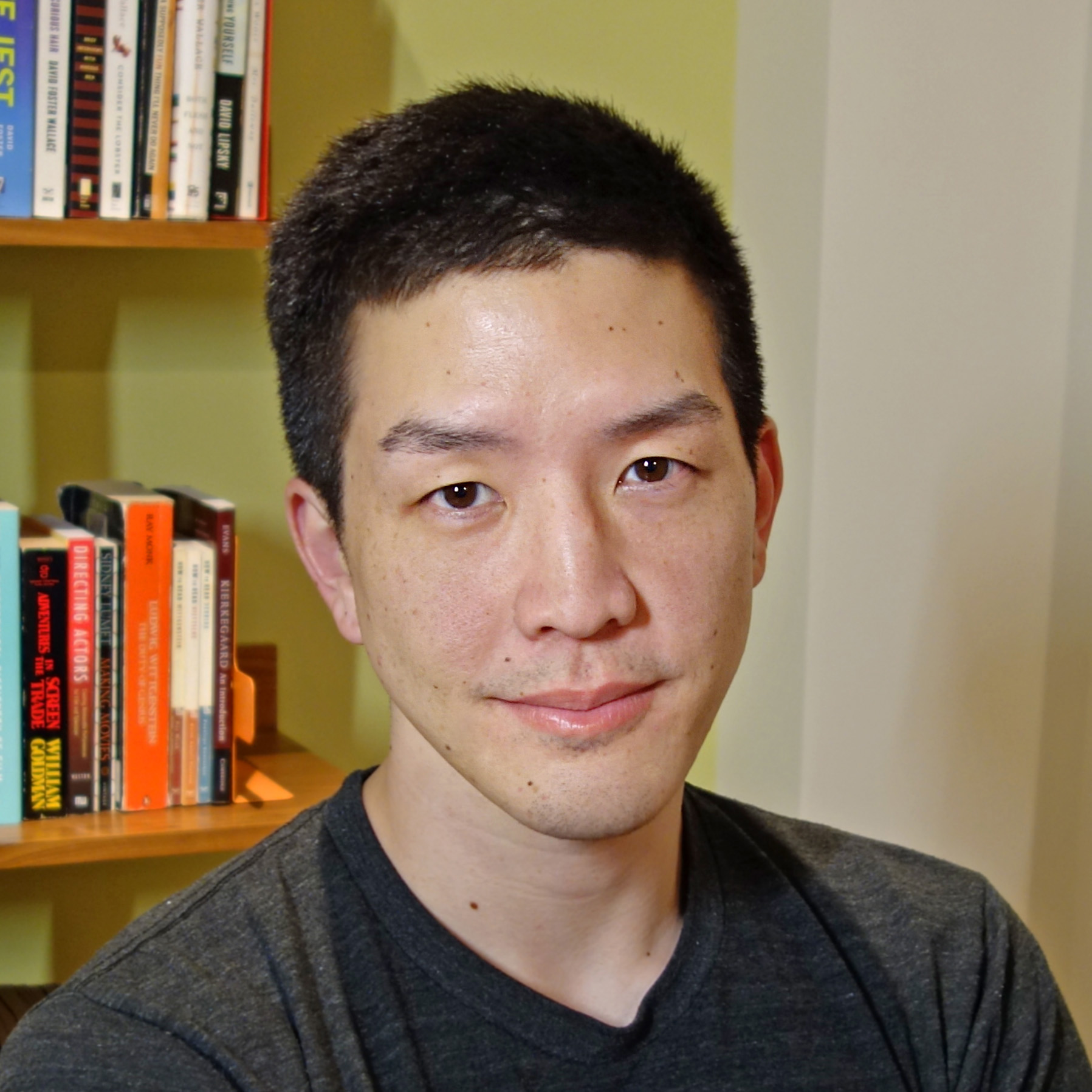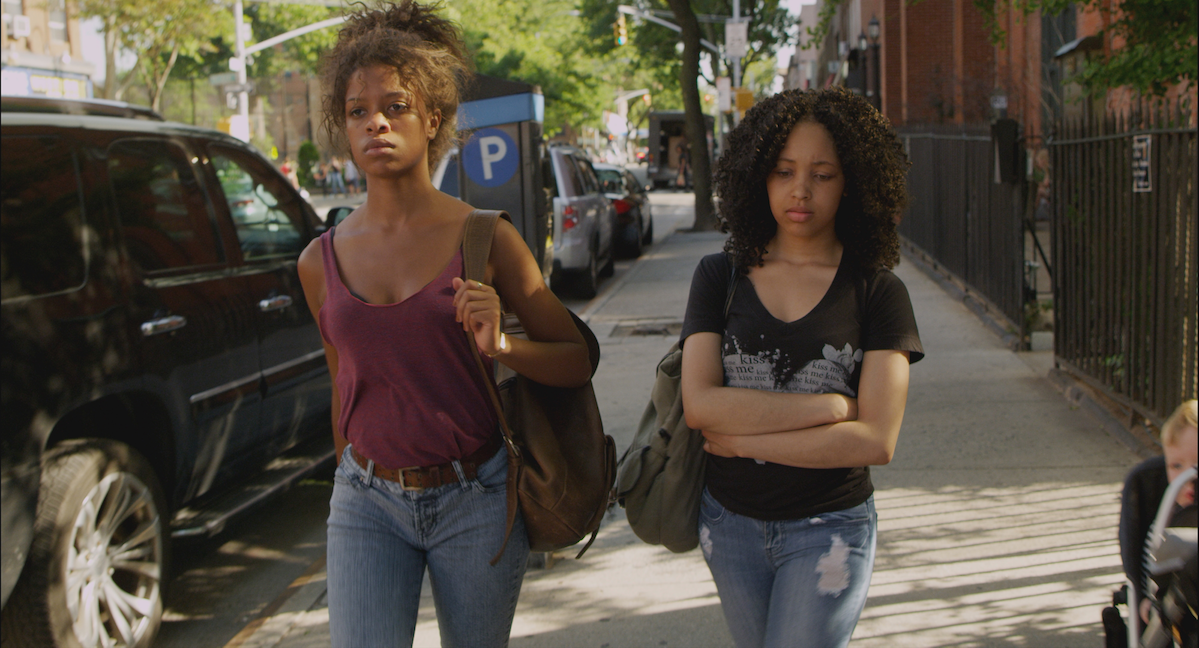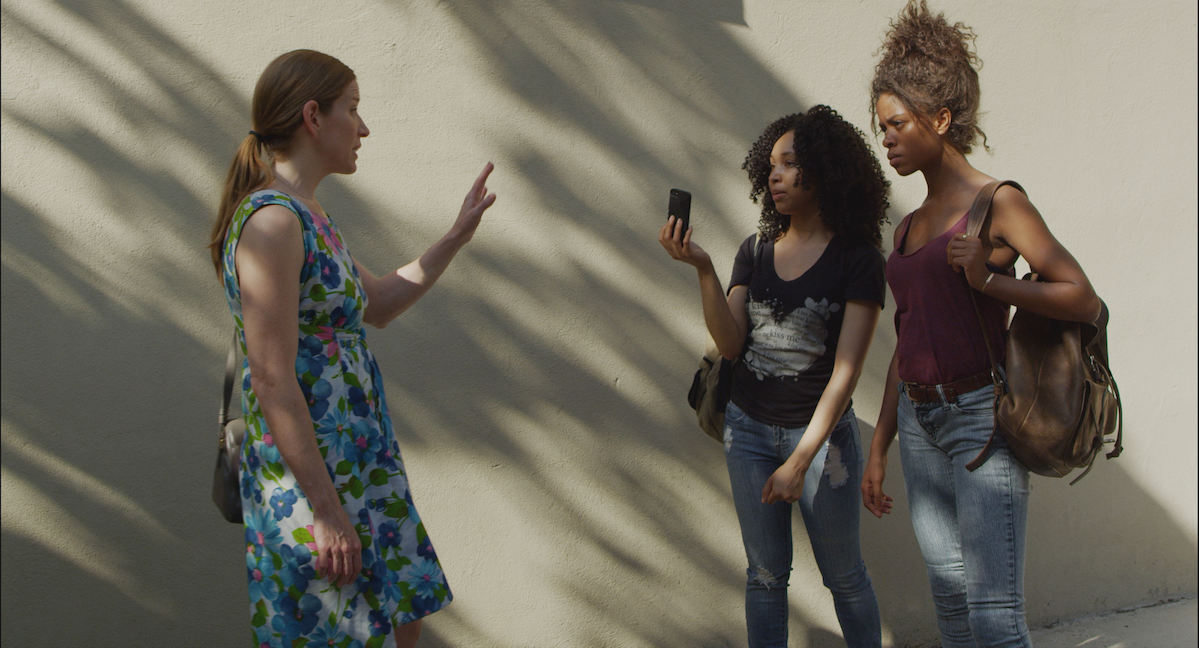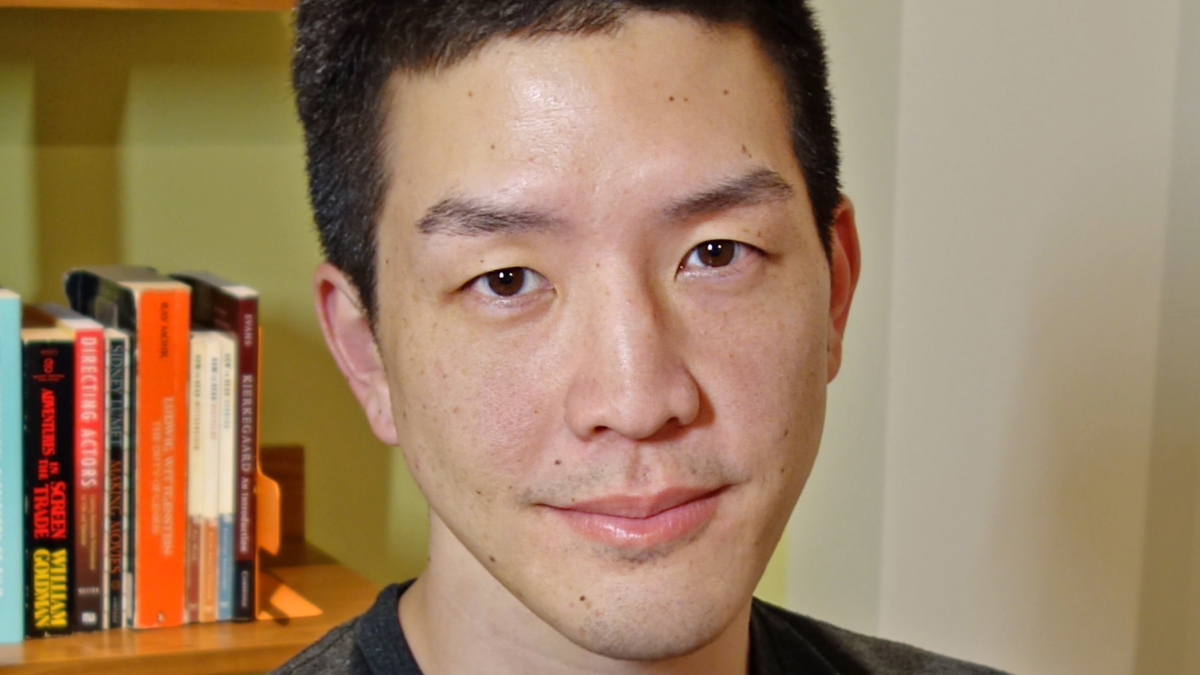Randy Yang’s short VIDEO, shot in a single take, captures a heated interaction and its surprising aftermath between a white woman and two black teenage girls who’ve captured her racist rant directed toward a homeless black man on video. The film was presented on July 23, 2016 as part of the MADE IN NY Shorts program for AAIFF ’16.
CineVue was able to sit down with director/writer Yang and delve into his background as well as the making of VIDEO.

Randy Yang (director)
Jackie Lam: How did you get the idea for VIDEO?
Randy Yang: I wrote VIDEO early last year when we were in the midst of the first Black Lives Matter protest movement. There’s this great upheaval in terms of having conversations about race and disparities especially with regards to policing and criminal justice.
I wanted to write a story that kinda tapped into that theme. I wanted to make a film that was meaningful. I’ve only made two short films and very amateur films at home and they’re all stupid and meaningless. If I’m starting law school, I wanna make something that means something. A major [theme] in the film is social media and I wanted to incorporate that because that played a big role in the Black Lives Matter movement—because the footage of a black man being shot by a police officer is so visceral and what galvanizes so many people.
JL: How did you find the locations for VIDEO?
RY: …I went through many neighborhoods to find the perfect spot [–Carroll Gardens in Brooklyn, NY]…As a bonus, the film has a really cool visual element where there’s a lot of gentrification going on, which really fits well because it makes sense that you’d see more upscale white people with like younger urban people of color.
JL: Have you ever thought about what you would do if you witnessed something similar to what happened in VIDEO?
RY: I’m thirty-five, so I don’t know that I would have filmed it. But now that I’m older, I would have the courage to say [something]. If it’s a private conversation, I would let it go…I hope this comes across in the film that people are human beings and make mistakes—I might chastise them and let it go. If I were in my early twenties, I would feel like someone needs to pay for that mistake. That’s one of the downsides of social media—Thank God I’m not a teenager in this era because I’ve made so many mistakes and if those mistakes were captured on film, they’d live on forever. The stakes are so high and smartphones are so ubiquitous.
JL: What changed in you to give you the courage to speak up now?
RY: Part of it is just being dissatisfied with what I was doing at the time. I worked at a typical corporate desk job but I had a passion for film. I quit to work on film, but I became dissatisfied again because—
JL: You wanna do your own films—
RY: But that’s really difficult for practical purposes. You need tons of money and to put in your dues. That coincided with the great recession, which disproportionally affected poor people, who tended to be people of color…There are a lot of people who are disenfranchised and don’t have advocates…It’s not fair that a kid like me, who was basically an underachiever all my life, can still end up living in East Village, and someone who’s brilliant but who happened to be born in the wrong neighborhood…is probably gonna not end up fulfilling his potential. That really spurred me to work in the area of public interest.
JL: Speaking of your law career, how did you manage making a film and—wait, you made VIDEO before law school, right?
RY: Yeah, I enrolled before 2015. The six months prior I had wrote, cast, shot, and edited the film. That was my last hurrah film…I knew I had to get it done before [law school].
JL: Yeah, that’s a good deadline.
RY: If that didn’t happen, there was no way it was gonna get made.
JL: I can totally relate. I was wondering what attracted you to the documentary-style narrative?
RY: I think it plays really well with the theme of the short, which deals with a woman who makes a mistake and it gets captured on a smartphone. This is an incident I imagine happens daily…And I wanted to tell a story in the documentary style because it makes the audience feel like a bystander.
JL: Going on a slight tangent–what do you think makes a good viral video?
RY: If I wanted to make a viral video, I think what sells right now is…
JL: Cats.
RY: Yeah, cats…But basically capturing someone who’s made a serious social faux pas…Let’s say there’s a really wealthy white guy/banker in a suit and you capture him…
JL: Walking into a glass door?
RY: People love to see people fall off their high stool.
JL: Like, literally, fall down.
RY: But also, there’s the element of justice. Many years ago, in one of the first viral vids I saw, a woman had picked up a cat and put it in a trash can and put a lid on it.
JL: Oh my god…
RY: And the owner is like, where’s my cat?…She checks her security footage and…puts the video online and says hey, help me find this person…You can imagine the hell that rained down on this woman…Let me re-answer my question. It’s bringing a sense of retributive justice to someone who “deserves it.”
JL: Don’t you think that can have unintended consequences? Is that karma?
RY: …The film plays on that. You see this woman has some humanity to her…If I was a teen and had my stuff videotaped, my God, people would hate me.

Left to right: Reilly Stith (Brianna) and Mars Williams (Shantell) in VIDEO
JL: It’s like karma, but times a million. Bringing it back to the film, Mars Williams and Reilly Stith have such great chemistry as Brianna and Shantell. How did you achieve that?
RY: I know now that casting is so important. The two most important things are writing and casting. Casting director [Lois Drabkin] deserves a lot of credit.
JL: Was there any adlibbing on set?
RY: Totally. There’s a core set of lines…Outside of that, I told them, if you feel something, say it [if you’re in character]. The first walk was all adlibbed. When they curse at the woman, that’s all adlibbed.
JL: What percent of dialogue would you say is adlibbed?
RY: Probably like thirty-five percent of the movie.
JL: That’s pretty cool. If you were to make another film, would you stick to this very realistic style?
RY: I think so. I’m not good at close ups, wide shots—it’s just so stilted. Cinéma vérité lets the actors dictate the movie. They perform and you try to capture it. I’m not good enough to do A camera, B camera set up.
JL: What have you learned from working on other people’s films?
RY: I learned “don’t edit a film to death.” Sometimes there’s no real fixing a bad film. The most important thing is how to write a good story.
JL: And how do you write a good story?
RY: I don’t know if I’ve learned. (laughs) The short film forces you to come up with a compelling story…You edit out the fluff, the fat. I can’t say I’m a good storyteller, but I can say I’ve gotten very good at editing my scripts.
JL: I liked how you gave the viewer space for their own interpretation. I remember you said you showed VIDEO in the South and some people reacted to it in an unexpected way.
RY: Thanks. This is the only time I’ll speak highly of my work—and this speaks highly of the performers too—at the end of the day, you don’t judge any of the characters. The audience could connect to each other. It’s so balanced. I’m like, “Wow that’s not how I interpreted it,” when people [tell me their take]. Only recently did I realize that one of the core themes of VIDEO is compassion. The idea od retribution is this barrier and only after the video is deleted, is compassion able to come through.

Left to right: Alyson Schacherer (Woman) is confronted by Mars Williams (Shantell) and Reilly Stith (Brianna) in VIDEO
Writer and director Randy Yang previously worked on films such as TRUE GRIT and NOT FADE AWAY. He has since made a career change and is currently a law school student at City University of New York. He hopes to work in criminal justice reform.

